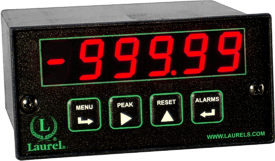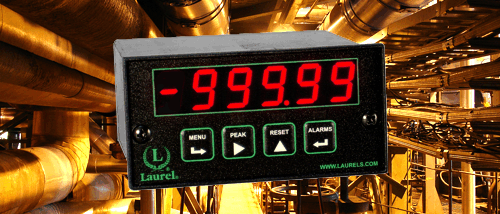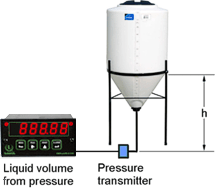






Custom curve linearization software CustCurv60.exe can be installed in the Extended version of all Laureate digital panel meters, counters, and transmitters, except in Laureate thermocouple and RTD meters and transmitters, which already have built-in linearization curves.

Applications. Custom curve linearization solves application problems where there is a non-linear relationship between the input and the desired reading, such as the temperature associated with resistance of an NTC thermistor. A common application is the volume of irregularly shaped tanks based on liquid level or pressure at the base of the tank. Custom curve linearization can provide exceptional accuracy from low cost transducers if these are repeatable.
Implementation. Linearizing is implemented in the form of 20 curvilinear quadratic spline fit segments, which provide much better accuracy than a larger number of straight line segments. The typical error will be from 0.1% to 0.01% of full scale, depending on the number of data points used for setup, the error in the data points, and the severity of non-linearities or discontinuities.
Setup of a Laureate linearizing meter or trasnmitter requires an external PC which is connected to the instrument via an RS232 or USB cable. Laurel's linearizing software is at no charge and can be downloaded as the exectuble file CustCurv60.exe from this page or our Software Download Page. A communications board is required in a meter or counter for setup, but can then be removed.
To program custom curve linearization, up to 200 data points entered into an Excel spreadsheet, where the first column is the independent X variable or non-linearized meter reading, and the second column is the dependent Y variable, or linearized meter reading. The Excel file is then saved as a text file and is processed by the software to calcuate 20 curvilinear spline fit segments. The calculated coefficients are then downloadet in the meter by our custom curve software. A built-in utility automatically displays the errors between the input data points and calculated data points. For details, please see our Custom Curve Linearization User Manual.
For use of Custom Curve Linearization or Power Factor with Laureate counters, the micrcocomputer firmware version has to be CTR2-32, not CTR2-33. If either of these two features is to be used with an Extended Laureate counter, please so indicate at the time of order.